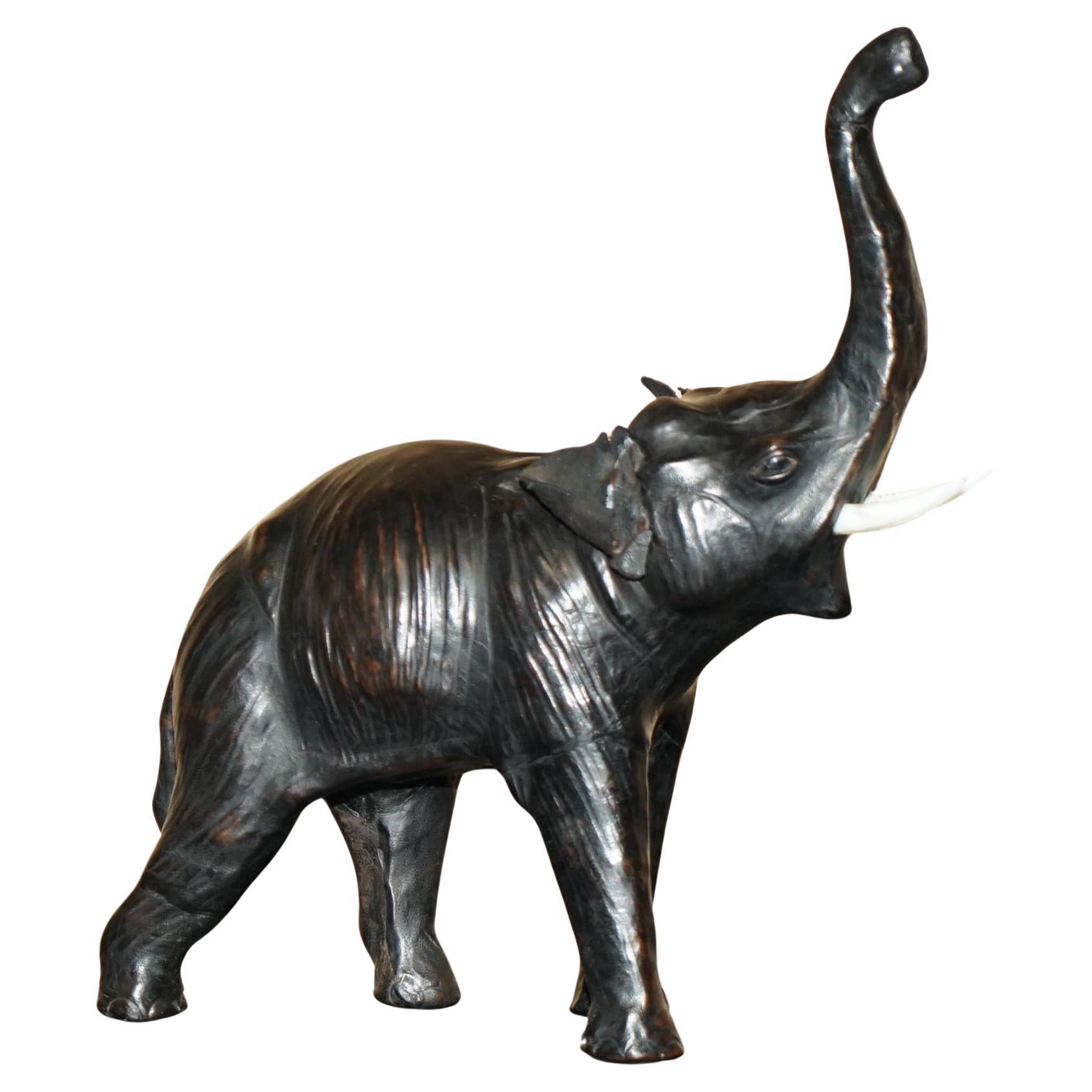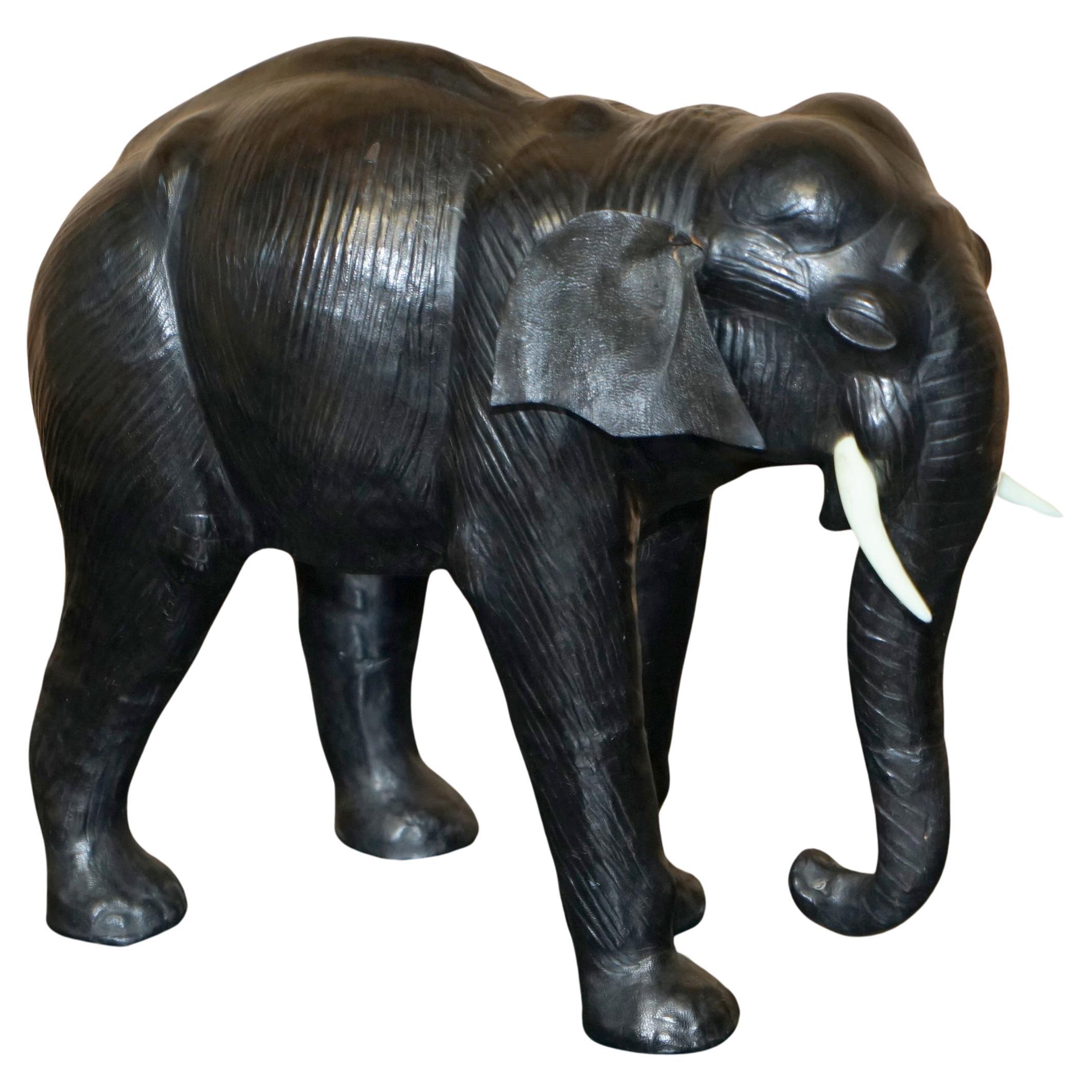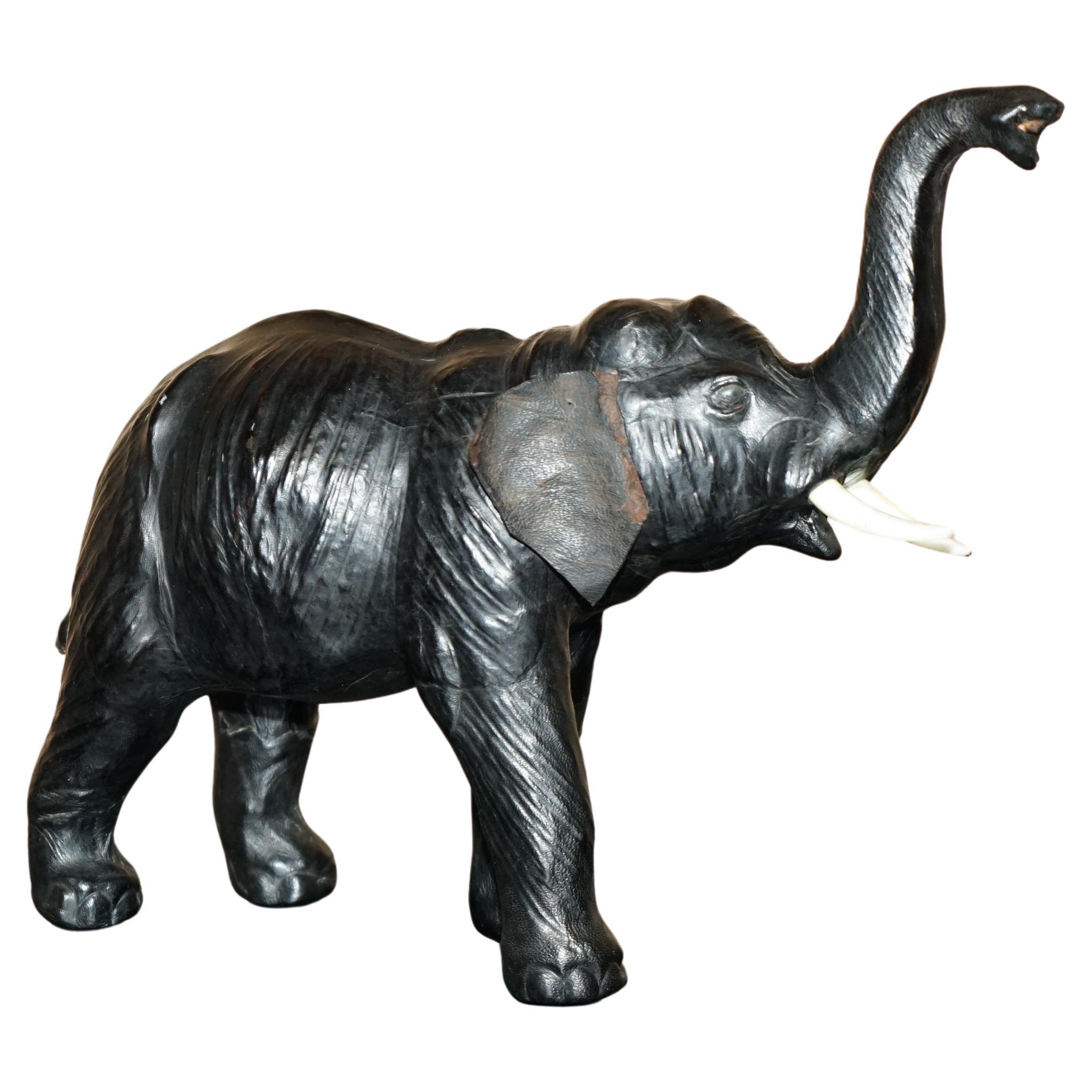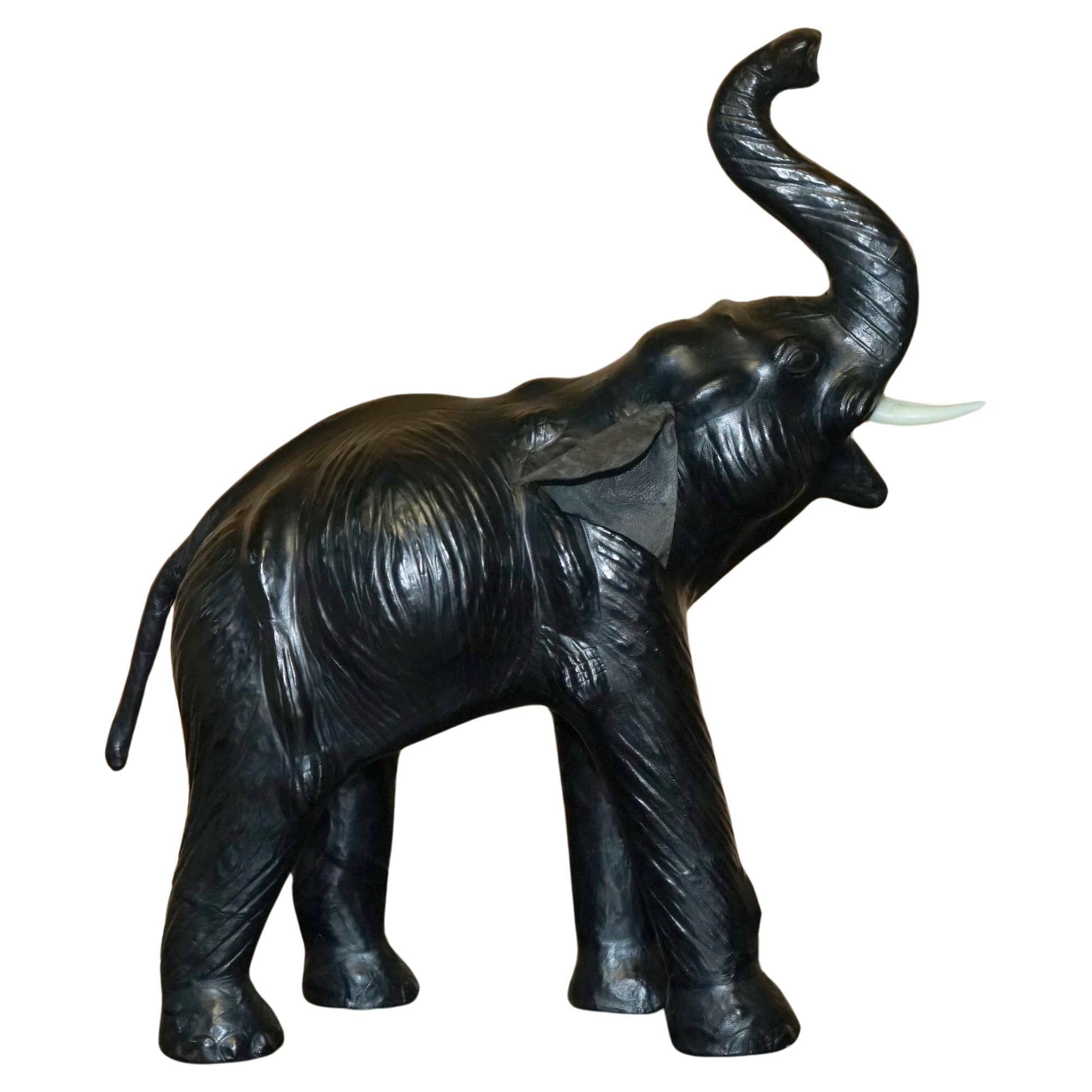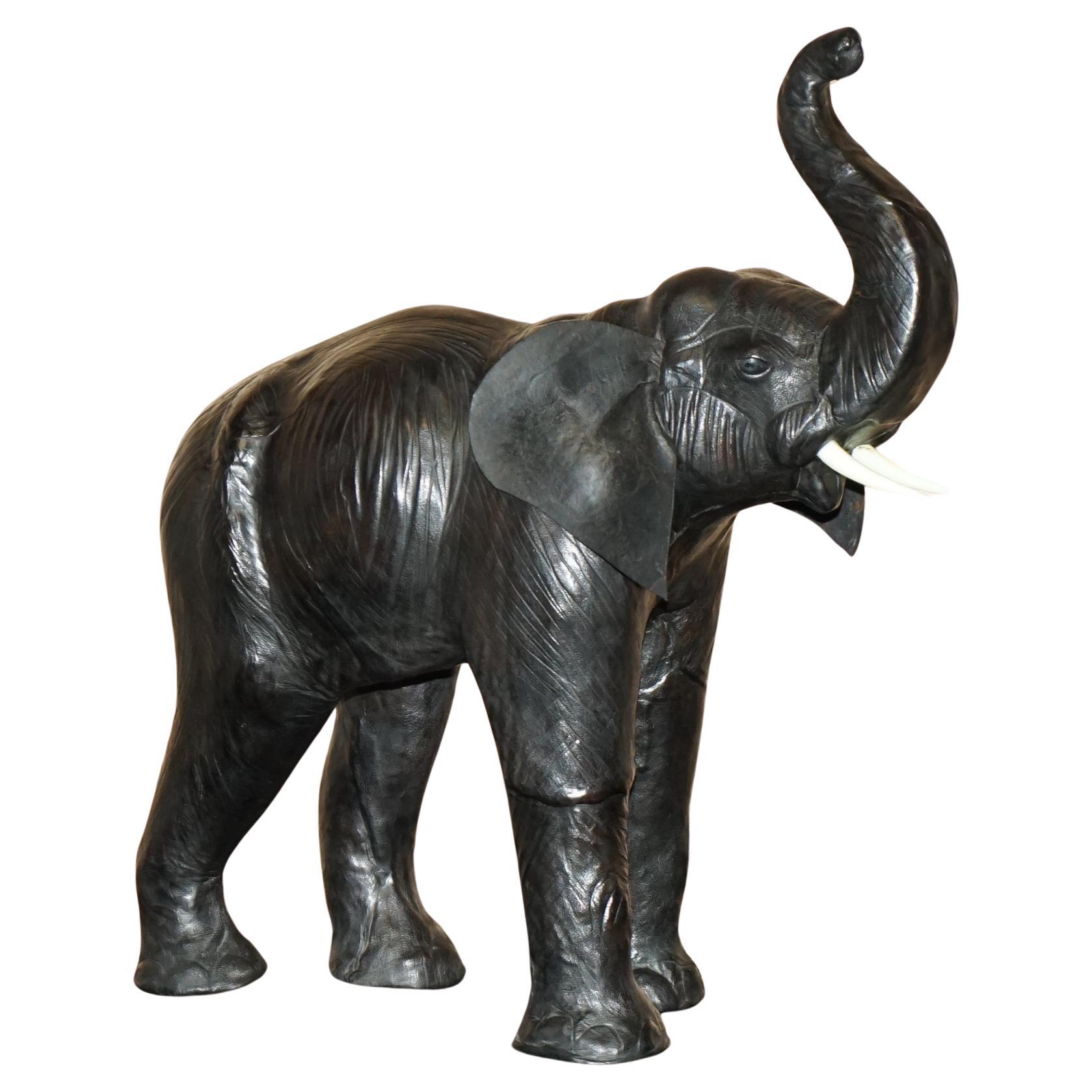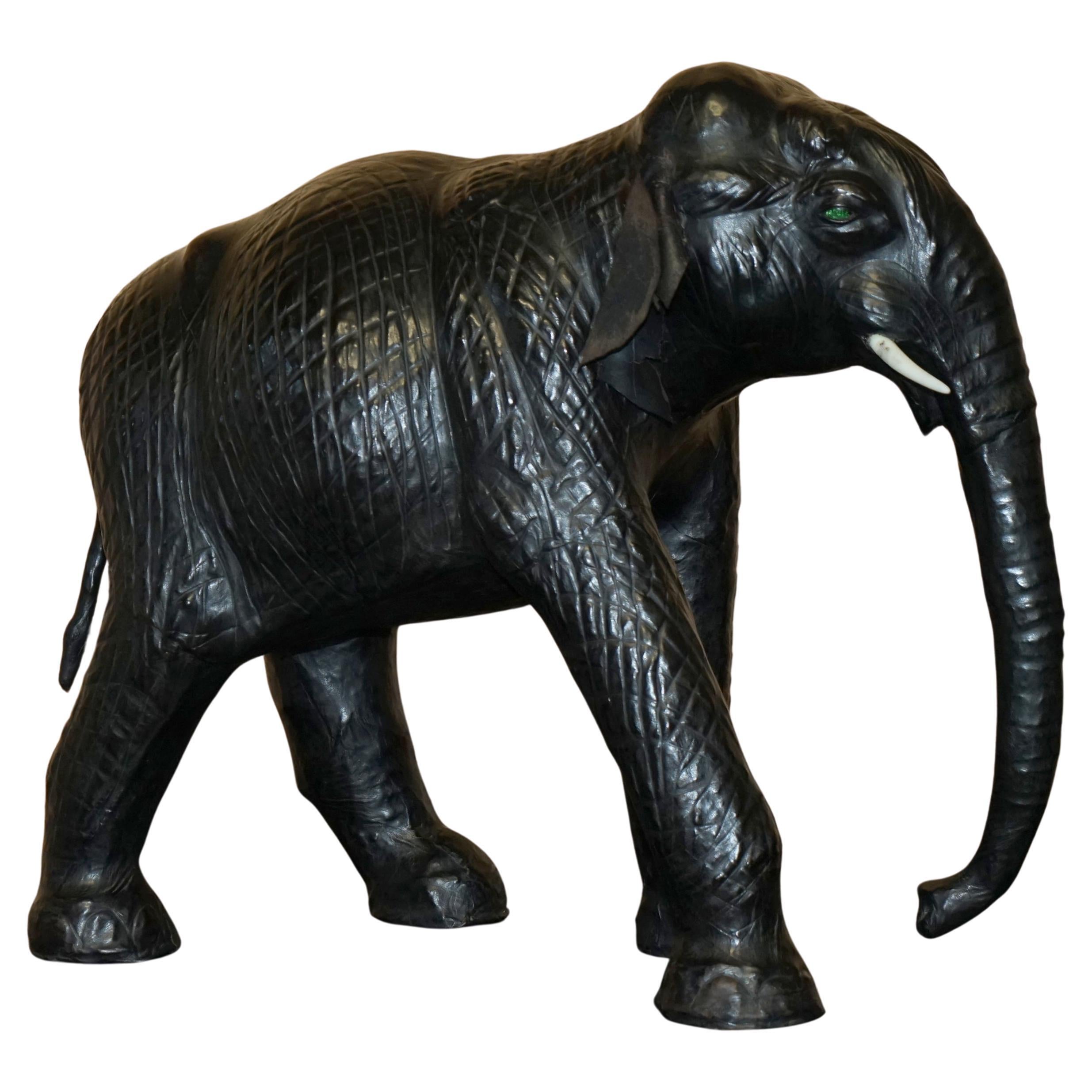Items Similar to LIBERTY'S LONDON OMERSA LEATHER RHINOCEROS RHiNO FOOTSTOOL STOOL GLASS EYES
Want more images or videos?
Request additional images or videos from the seller
1 of 16
LIBERTY'S LONDON OMERSA LEATHER RHINOCEROS RHiNO FOOTSTOOL STOOL GLASS EYES
About the Item
Royal House Antiques
Royal House Antiques is delighted to offer for sale this small absolutely sublime original 1930’s Liberty’s London Omersa leather hand dyed stool
Please note the delivery fee listed is just a guide, it covers within the M25 only for the UK and local Europe only for international, if you would like an accurate quote, please send me your postcode and I’ll provide you with the exact price.
I have a suite of ten of these which I'm now listing for sale, they are all elephants apart from one Rhino, I also have other examples listed under my other items of pigs dogs and horses. Please note from this new suite most have some age and use related repairs to the ears, I will detail anything of note below but please view the very details pictures as they form part of the description around the condition
These come in varying sizes, this is the small version adult, it has glass eyes a lovely worn patina
These were originally designed as footstools, this is a large one, now a days they are of course just for decoration
We have cleaned waxed and polished it from top to bottom, the condition is very good for the age, the leather has a wonderful patina throughout, this piece just screams period patina and charm. From what I can see this one is perfect apart from lots of age related cracks in the body which all add to the look and feel
Dimensions
Height:- 17cm
Width:- 12.5cm
Depth:- 34cm
Please note all measurements are taken at the widest point, if you would like any additional or specific measurements please ask.
Any questions please feel free to ask before you bid.
- Creator:Liberty of London (Sculptor),Omersa (Maker)
- Dimensions:Height: 6.7 in (17 cm)Width: 4.93 in (12.5 cm)Depth: 13.39 in (34 cm)
- Style:Art Deco (Of the Period)
- Materials and Techniques:
- Place of Origin:
- Period:
- Date of Manufacture:1930s
- Condition:Wear consistent with age and use. Minor fading.
- Seller Location:GB
- Reference Number:1stDibs: LU2823338375742
About the Seller
4.6
Platinum Seller
These expertly vetted sellers are 1stDibs' most experienced sellers and are rated highest by our customers.
Established in 2012
1stDibs seller since 2017
1,712 sales on 1stDibs
Typical response time: <1 hour
- ShippingRetrieving quote...Ships From: United Kingdom
- Return PolicyA return for this item may be initiated within 14 days of delivery.
More From This SellerView All
- DECORATIVE LiBERTY'S LONDON OMERSA LEATHER ELEPHANT FOOTSTOOL STOOL GLASS EYESBy Liberty of London, OmersaLocated in GBRoyal House Antiques Royal House Antiques is delighted to offer for sale this small absolutely sublime original 1930’s Liberty’s London Omersa leather hand dyed large stool Please ...Category
Vintage 1930s North American Art Deco Footstools
MaterialsLeather
- COLLECTABLE LiBERTY'S LONDON OMERSA LEATHER ELEPHANT FOOTSTOOL STOOL GLASS EYESBy Omersa, Liberty of LondonLocated in GBRoyal House Antiques Royal House Antiques is delighted to offer for sale this absolutely sublime original 1930’s Liberty’s London Omersa leather hand dyed large stool Please note t...Category
Vintage 1930s North American Art Deco Footstools
MaterialsLeather
- LUXURY LiBERTY'S LONDON OMERSA LEATHER ELEPHANT FOOTSTOOL STOOL GLASS EYESBy Liberty of London, OmersaLocated in GBRoyal House Antiques Royal House Antiques is delighted to offer for sale this small absolutely sublime original 1930’s Liberty’s London Omersa leather hand dyed large stool Please ...Category
Vintage 1930s North American Art Deco Footstools
MaterialsLeather
- LOVELY LIBERTY'S LONDON OMERSA LEATHER ELEPHANT FOOTSTOOL STOOL WiTH GLASS EYESBy Liberty of London, OmersaLocated in GBRoyal House Antiques Royal House Antiques is delighted to offer for sale this absolutely sublime original 1930’s Liberty’s London Omersa leather hand dyed large stool Please note t...Category
Vintage 1930s North American Art Deco Footstools
MaterialsLeather
- FINE HAPPY GLASS EYED LiBERTY'S LONDON OMERSA LEATHER ELEPHANT FOOTSTOOL STOOLBy Liberty of London, OmersaLocated in GBRoyal House Antiques Royal House Antiques is delighted to offer for sale this absolutely sublime original 1930’s Liberty’s London Omersa leather hand dyed large stool Please note ...Category
Vintage 1930s North American Art Deco Footstools
MaterialsLeather
- SUPER RARE GREEN EYED LiBERTY'S LONDON OMERSA LEATHER ELEPHANT FOOTSTOOL STOOLBy Liberty of London, OmersaLocated in GBRoyal House Antiques Royal House Antiques is delighted to offer for sale this absolutely sublime very rare and original 1930’s Liberty’s London Omersa leather hand dyed large stool ...Category
Vintage 1930s North American Art Deco Footstools
MaterialsLeather
You May Also Like
- Vintage Omersa for Abercrombie & Fitch Rhino or Rhinoceros Leather FootstoolBy Abercrombie & FitchLocated in Philadelphia, PAA fine vintage leather footstool. Designed by Daniel Omersa for Abercrombie & Fitch in the 1960's. In the form of a standing rhinoceros with its signature folded eyes, floppy ears,...Category
20th Century Mid-Century Modern Footstools
MaterialsLeather
- Omersa Made in England Handcrafted Leather Rhino Footstool / Ottoman, Circa 1960By Omersa, Dimitri OmersaLocated in Los Angeles, CADimitri Omersa handcrafted leather rhino footstool or ottoman. Circa 1960's. The leather is very thick and shows patina and wear throughout. ...Category
Vintage 1960s British Mid-Century Modern Footstools
MaterialsLeather
- X Large Leather Rhinoceros Footstool Dimitri Omersa Abercrombie & Fitch, 70'sBy Abercrombie & FitchLocated in Pemberton, NJVintage XL leather rhinoceros decorative footstool designed by Dimitri Omersa for Abercrombie and Fitch, circa 1960s is hand-stitched and features aged leather. This Charming fellow is huge-much bigger than I expected. It measures 20" T x 45" L x 10" D and the seat height is 16" T. The horn, tail, and eyes are intact. The vintage leather footstool...Category
Vintage 1970s British Mid-Century Modern Footstools
MaterialsLeather
- Dimitri Omersa Rhino Footstool for Abercrombie & FitchBy Dimitri OmersaLocated in San Francisco, CADimitri Omersa design leather Rhino footstool for Abercrombie & Fitch. The best condition example available on the market today and the competitively ...Category
Vintage 1960s English Mid-Century Modern Footstools
MaterialsLeather
- Leather Rhinoceros FootstoolLocated in West Palm Beach, FLLeather Rhinoceros footrest that will add a whimsical touch to any room. Very well made & quite sturdy.Category
20th Century Footstools
MaterialsLeather
- Rhinoceros Leather FootstoolLocated in West Palm Beach, FLWhimsical leather Rhinoceros footstool. A very unique and interesting piece.Category
20th Century Footstools
MaterialsLeather
Recently Viewed
View AllMore Ways To Browse
Liberty Credenza
Adrian Pearsall Footstool
Late 20th Century Lucite Footstools
Squiggle Ottoman
Swedish Birch Footstools
Tiger Footstool
Beachcomber Milking Stool In Oiled Walnut
Beachcomber Milking Stool
British Rosewood Footstools
English Rosewood Footstools
Footstool Rectangle
Milo Baughman Upside Down U Ottoman
Moller Footstool
Moller Rosewood Ottoman
Muebles Vintage Argentina
North American Cowhide Footstools
Pierre Frey Lasso
Pierre Frey Pink Lasso Fabric
